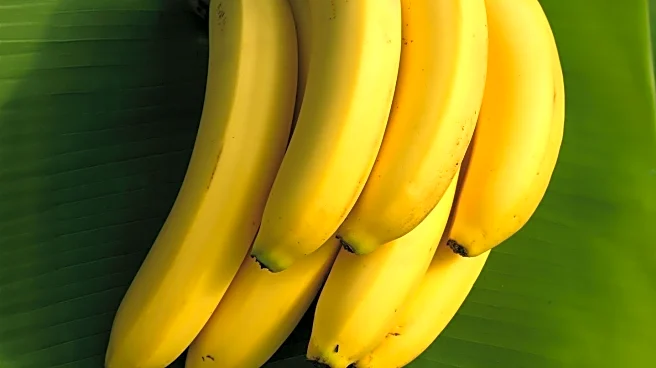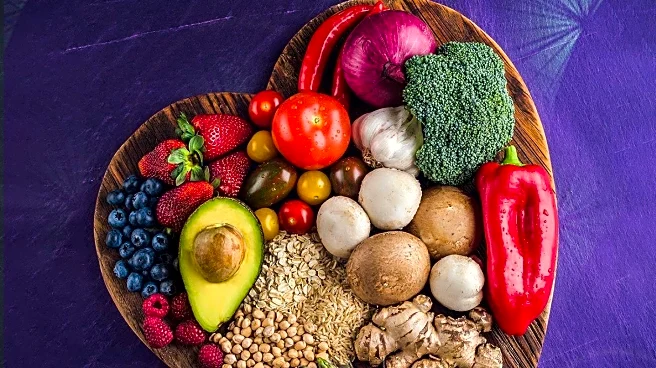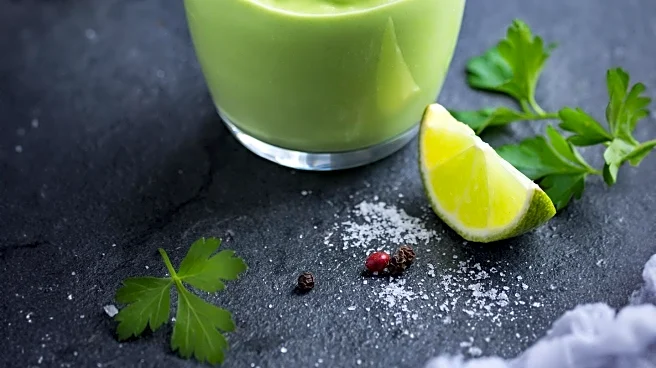What's Happening?
Registered dietitians explain how the ripeness level of bananas affects their nutritional content and health benefits. As bananas ripen, their sugar, starch, and vitamin levels change, impacting their suitability
for different dietary needs. Underripe bananas, which are green and firm, contain high resistant starch and low sugar, beneficial for gut health and blood sugar stability. Barely ripe bananas, mostly yellow with some green, offer similar benefits with a slightly sweeter taste. Ripe bananas, fully yellow and soft, are high in natural sugars and antioxidants, ideal for quick energy. Very ripe bananas, with brown spots, are highest in sugar, suitable for fast energy needs but less ideal for blood sugar management.
Why It's Important?
Understanding the nutritional differences in banana ripeness can help individuals tailor their fruit consumption to meet specific health goals. For those managing blood sugar levels, underripe or barely ripe bananas may be preferable due to their lower sugar content. Conversely, athletes or individuals needing quick energy might opt for ripe or very ripe bananas. This knowledge empowers consumers to make informed dietary choices that align with their health needs, whether it's managing diabetes, enhancing gut health, or fueling workouts.
What's Next?
Consumers are encouraged to consider banana ripeness when purchasing and consuming them, aligning their choices with personal health goals. Dietitians suggest pairing underripe bananas with protein-rich foods like peanut butter to enhance blood sugar response and gut health. As awareness of the nutritional impact of fruit ripeness grows, individuals may increasingly tailor their diets to optimize health outcomes.
Beyond the Headlines
The focus on banana ripeness underscores the broader importance of understanding food nutrition and its impact on health. This knowledge can lead to more personalized and effective dietary strategies, promoting overall well-being and disease prevention.











